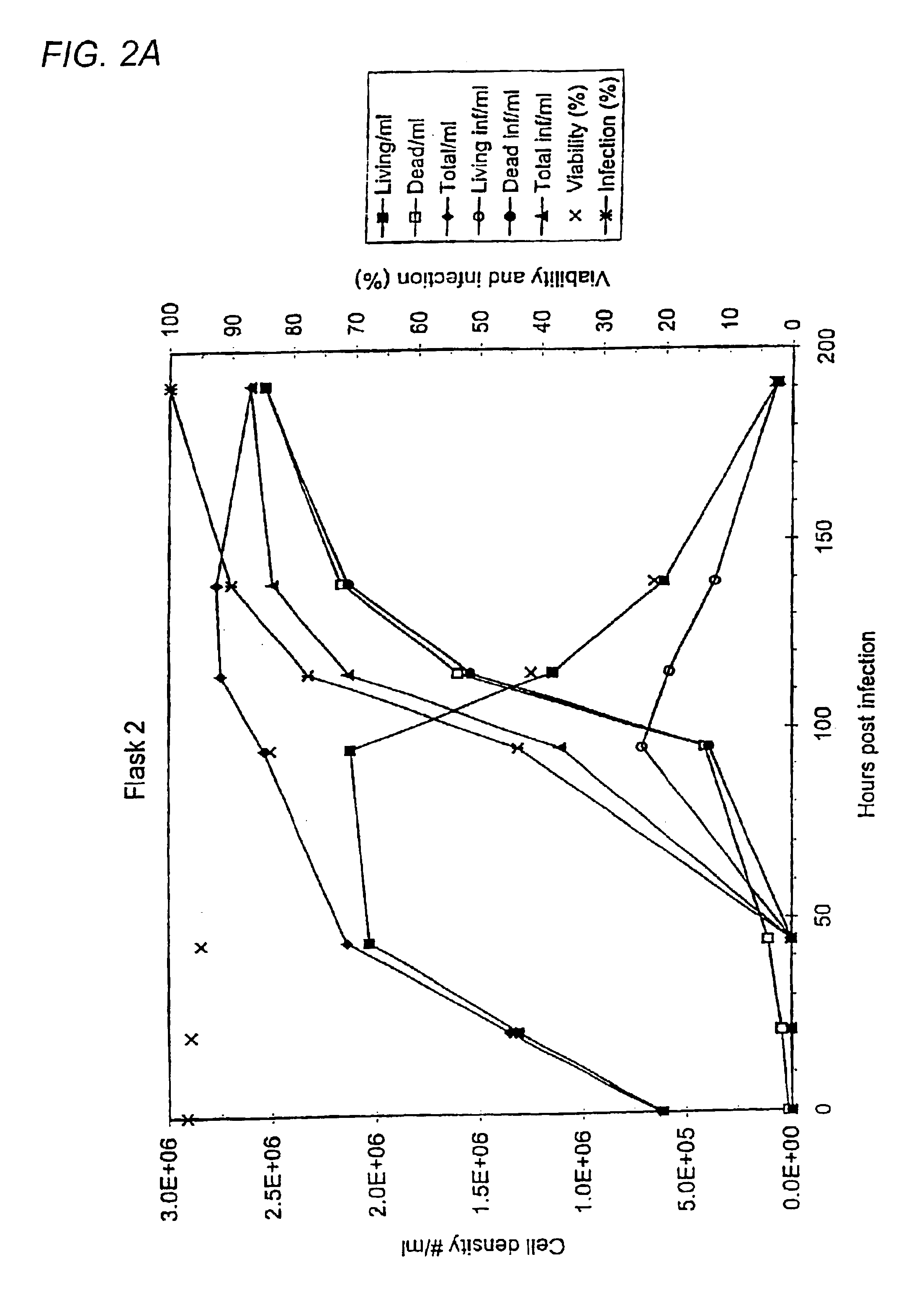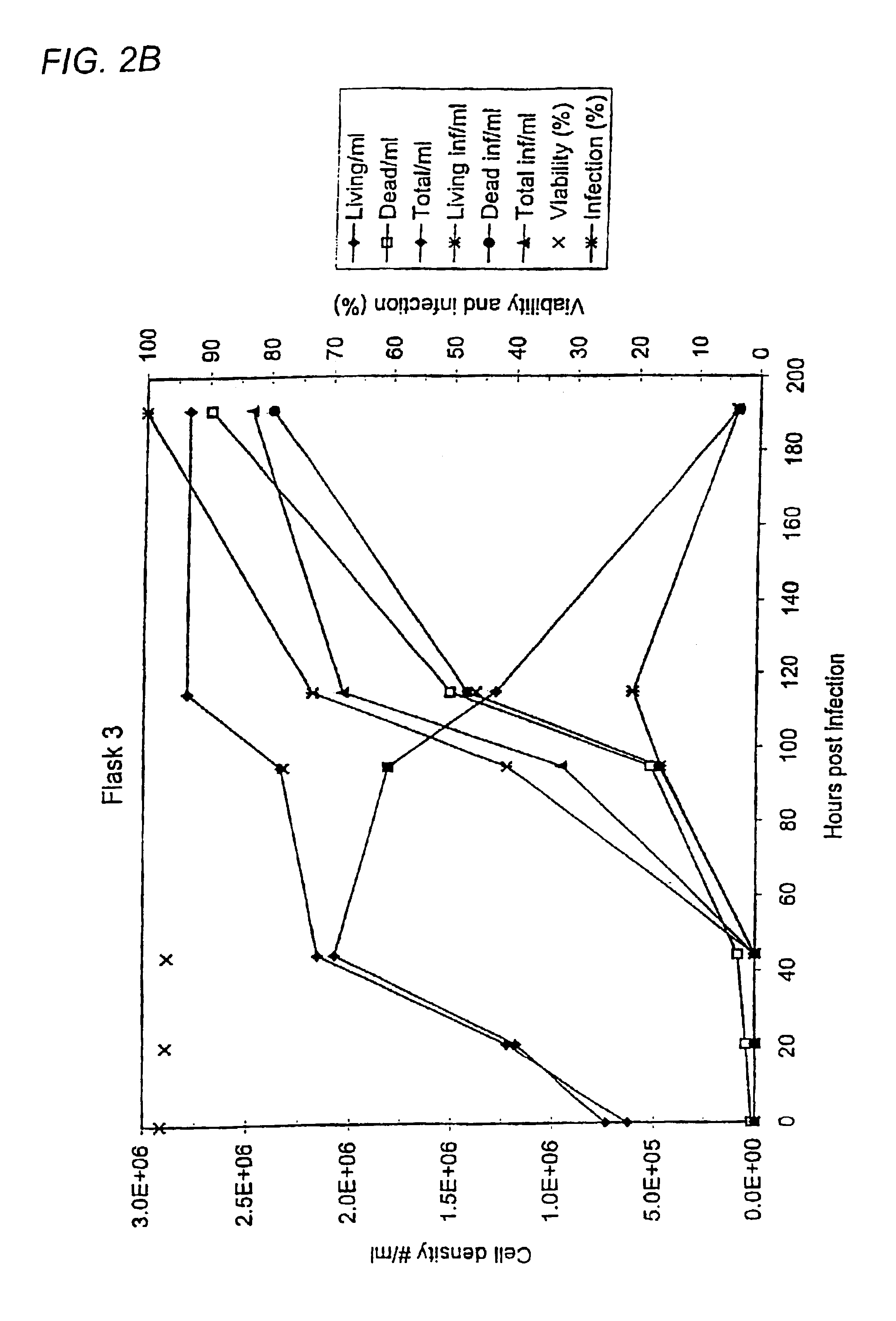E2 subunit vaccine comprising recombinant pestivirus E2 protein
a technology of pestivirus and e2 subunit, applied in the field of methods, can solve the problems of limited baculovirus-expressed protein production in insect cells, purely empirical analysis of the same phenomenon considered difficult, if not impossible, and the quantitative understanding of binding and initial infection processes is still poor, so as to achieve the desired protein, increase or improve the yield of a recombinant protein, and improve the yield
- Summary
- Abstract
- Description
- Claims
- Application Information
AI Technical Summary
Benefits of technology
Problems solved by technology
Method used
Image
Examples
Embodiment Construction
[0036]Experiments
[0037]The genus Pestivirus of the family Flaviviridae conventionally consists of classical swine fever virus (CSFV), border disease virus (BDV), and bovine viral diarrhea virus (BVDV). Genomes of several BVDV and CSFV strains have been sequenced (Renard et al., 1987 EP application 0208672; Collett et al., 1988, Virology 165, 191-199; Deng and Brock, 1992, Virology 1991, 865-679; Meyers et al., 1989, Virology 171, 555-567; Moonnann et al., 1990, Virology 177, 184-188). For BDV, only incomplete genomic nucleotide sequences are yet available. The pestivirus genome is a positive-stranded RNA molecule of about 12.5 kilobases containing one large open reading frame. The open reading frame is translated into a hypothetical polyprotein of approximately 4,000 amino acids, which is processed by virus- and cell-encoded proteases. The open reading frame is flanked by two highly conserved small non-translated regions, which are probably involved in the replication of the genome....
PUM
| Property | Measurement | Unit |
|---|---|---|
| volume | aaaaa | aaaaa |
| volume | aaaaa | aaaaa |
| volume | aaaaa | aaaaa |
Abstract
Description
Claims
Application Information
 Login to View More
Login to View More - R&D
- Intellectual Property
- Life Sciences
- Materials
- Tech Scout
- Unparalleled Data Quality
- Higher Quality Content
- 60% Fewer Hallucinations
Browse by: Latest US Patents, China's latest patents, Technical Efficacy Thesaurus, Application Domain, Technology Topic, Popular Technical Reports.
© 2025 PatSnap. All rights reserved.Legal|Privacy policy|Modern Slavery Act Transparency Statement|Sitemap|About US| Contact US: help@patsnap.com



